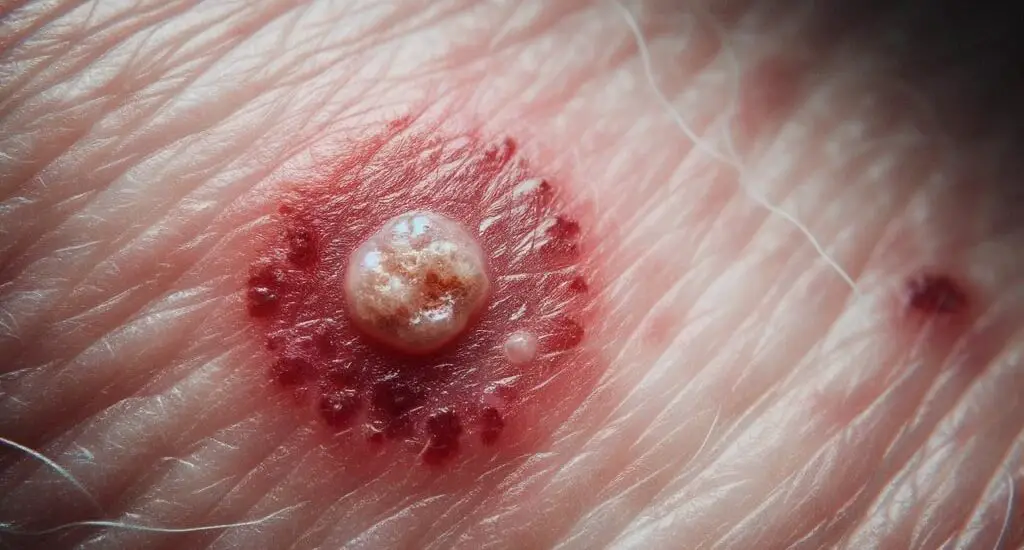When you’ve just undergone a laser tattoo removal procedure, you might notice that blisters have started to form on your skin. This can be concerning, and you may wonder, “should you pop blisters after laser tattoo removal?” This comprehensive guide will address this question and provide you with expert-backed advice for optimal healing.

Table of Contents
Should You Pop Blisters After Laser Tattoo Removal?
The unequivocal answer is no, you should not pop blisters that form after laser tattoo removal. While it may be tempting to pop a blister for immediate relief, this action exposes the vulnerable inner skin layers to external bacteria, thereby significantly increasing the risk of infection.
The fluid inside the blister acts as a natural barrier against infection and aids in the healing process. When you pop the blister, you’re effectively removing this protective barrier.
Moreover, popping a blister may lead to further skin damage and could potentially result in scarring. Any infection that does occur from a popped blister can also prolong your overall healing time and may require additional medical treatment, including antibiotics or even hospitalization in extreme cases. (Source)
Proper Care for Blisters After Laser Tattoo Removal
If you’re dealing with blisters, it’s crucial to know how to take proper care of them to promote healing and reduce the risk of complications. Here is a more detailed breakdown:
Clean the Area
Start by washing your hands thoroughly to minimize the risk of introducing bacteria to the blister. Then, use a mild soap and lukewarm water to cleanse the affected area gently. Avoid vigorous scrubbing as this can exacerbate the blister. Pat the area dry with a clean towel.
Apply a Cold Compress
Utilize a cold compress or an ice pack wrapped in a cloth or towel to reduce inflammation and provide relief from discomfort. Apply the cold compress for 15-20 minutes, then remove it for at least 45 minutes to an hour before reapplying. This will help minimize swelling and reduce pain without causing frostbite.
Antibiotic Ointment
Once the area is clean and dry, apply a thin layer of over-the-counter antibiotic ointment. This serves to keep the area moist, which can facilitate faster healing and also offers additional protection against bacterial infection.
You can check out this Equate First Aid Triple Antibiotic Ointment at Walmart.
Cover with a Sterile Bandage
Use a sterile, non-stick bandage like this Dealmed Fabric Adhesive Bandage with Sterile Non-Stick Pad from Walmart to cover the blister. Make sure the adhesive does not touch the blister. The bandage should be snug but not too tight to avoid putting pressure on the blister. Change the bandage daily or sooner if it becomes wet or dirty.
Following these steps diligently will significantly reduce the risk of complications, promote faster healing, and minimize discomfort during the healing process.
Check out these other articles…
What is the Best Laser for Black Tattoo Removal? Answered
Bumps Skin After Laser Tattoo Removal: Causes & Remedies
Brown Skin After Laser Tattoo Removal: Comprehensive Guide
Should Skin Blister After Laser Tattoo Removal? Easy Answer
How to Treat Skin After Laser Tattoo Removal: Essential Tips
Does Skin Go Back to Normal After Laser Tattoo Removal?
What Causes Blisters After Laser Tattoo Removal? Easy Answer
When to Seek Professional Help
If you notice any of the following signs of infection or complications, you should consult your healthcare provider immediately:
Increasing redness around the blister
Warmth or heat emanating from the blistered area
Foul-smelling pus or discharge
Increasing pain or discomfort


